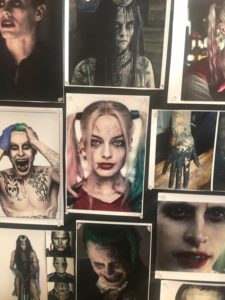
At the Samuel Goldwyn Theater in Beverly Hills on February 25, a full house witnessed the importance of cinema makeup artistry and hairstyling brilliance to the overall success of a film. Indeed, three wholly disparate projects were presented by Academy of Motion Picture Arts & Sciences Makeup Branch governors Kathryn Blondell, Lois Burwell, and Leonard Engelman, each revealing a different aspect of makeup craftsmanship, but all equally relevant in its respective movie.
One of 17 Academy branches, the Makeup Branch meets each April and October to review films under Oscar consideration for Best Makeup/Hairstyling that year. After a group of films is whittled down to the core seven, a “bakeoff” takes place where the films are presented to members who then choose the three top films which will be nominated for an Oscar. Logically, the winner is then chosen from the three nominated films, which, for 2017 was Suicide Squad, featuring all character designs by Alessandro Bertolazzi, wig supervision by Giorgio Gregorini, and special makeup effects by Christopher Nelson. Additional nominees included Joel Harlow and Richie Alonzo for prosthetic-based alien creations in Star Trek Beyond and Love Larson and Eva von Bahr for old-age makeup creations in the Swedish film A Man Called Ove.
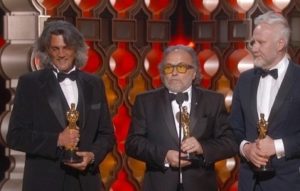
In Suicide Squad, numerous challenges awaited the 49 total makeup artists and hair/wig stylists on the project. Bertolazzi explained how realizing the Joker character, played by Jared Leto, was the most formidable task awaiting him. In elaborate lobby displays, Suicide Squad’s conceptual designs revealed many inspirations for Bertolazzi’s Joker, notably including Conrad Veidt’s character of Gwynplaine from the 1928 epic The Man Who Laughs. Cinema history suggests that the Veidt makeup by Universal Pictures artist Jack Pierce was actually the image which led to Bill Finger, Bob Kane, and Jerry Robinson‘s creation of The Joker in the original Batman comics.
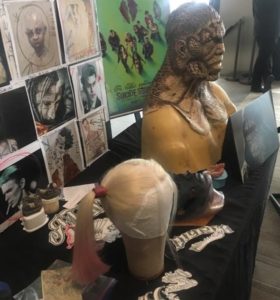
In a question-and-answer period, Nelson, who brought the Killer Croc character to life some 70 times during Suicide Squad’s production, spoke of his humble origins in a small impoverished town outside Pittsburgh, Pennsylvania and his dreams of breaking into professional makeup work despite critical naysayers in his youth. Nelson also credited the many technicians at KNB EFX Group for developing the prosthetic appliances required for Killer Croc. In photos shown onscreen amidst clips from the film, Gregorini’s elaborate wigs were visible for Suicide Squad’s chief characters, including Margot Robbie’s Harley Quinn.
For Star Trek Beyond, Harlow and Alonzo spoke of the intricacies in creating otherworldly characters numerous times for their screen appearances. Alonzo, focusing on the Jaylah character, had to execute due precision in his application given the stark contrast of her white facial visage with added detailed black markings. Harlow noted that makeup artists attempt to create the exact same makeup on multiple occasions, but oftentimes, some artistic license is taken when a character must appear 20 or 30 times, requiring fully separate applications days.
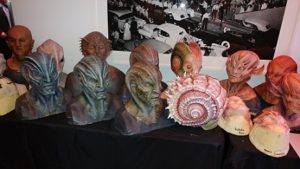
Lastly, Love and von Bahr conveyed the relentless monotony in creating silicone aging appliances on a regular basis for The Man Called Ove. In von Bahr’s case, individual hairs were required to be “punched” into the silicone appliance that served as an extended baldcap for their leading character, played by Rolf Lassgård, who was in attendance at the symposium. Each day of filming, a separate appliance was necessitated, meaning that von Bahr punched separate hairs into the full appliance five days per week for the duration of principal photography. Moreover, Lassgård, who turned 60 during filming, had a full head of hair, meaning that Larson and von Bahr’s work had to hide all of the actor’s own hair—in addition to aging him to various age stages in the story. The two were constantly on set to color their appliances to match the degree of activity that Lassgård undertook, including adding red makeup colors for moments when he had been vigorously active.
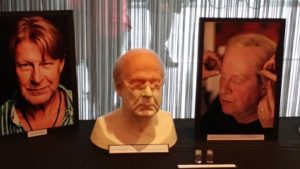
With the revelations coming forth about the attention to detail and sheer volume of work required by the makeup and hair teams on these films, loud gasps were heard throughout the Samuel Goldwyn Theater during the two-hour Oscar symposium. Clearly, the relative invisibility of makeup artistry and hairstyling excellence to the general public might render many of these artists more obscure than their behind-the-scenes counterparts on a film. However, events such as this one shed new light on the degree to which these craftspeople are essential to the believability and raw power of a cinematic experience.





